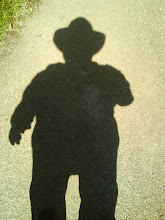What's so special about e-learning?
While I was reading through a colleague's research on e-learning, a number of fascinating issues arose.
1. What's so special about e-learning (from a socio/linguistic/discourse) perspective?
The issue is, whether the conversations, interactions, or recorded conversations that happen in e-learning are any different from other kinds of communicative interaction. In other words, is it a matter of geography, time, or is there a difference in kind?
I come down on the 'difference in kind' side, but this is the first time this issue has been posed to me (by a text) in quite such clear terms. So I am still hard pressed to unpack, analyse, and reconstruct a model for what this 'difference of kind' actually is. But here goes ...
I don’t think the macro domain is ‘electronic discourse’. More useful would be ‘collaborative, virtual, community of enquiry’. I think there is 'mode threshold' which is the threshold between:
collaborative community of enquiry, and
collaborative, virtual, community of enquiry.
I don't think this is just a matter of media, but of complexity and (something like) 'social syntax' and therefore mode. At the one end of the spectrum virtual Communities of Inquire just re-situate and transcribe non-virtual Communities of Inquiry into what various ‘Latin’ conversational registers do – they just all seem to talk at once.
2. Braiding
Virtual CoI, and certainly good, interesting, virtual CoI are built up within weaving and cross linking (at message, semantic and meta-semantic levels) across time, trains of thought and interaction, and across other virtual media, which is a qualitatively different process, and amount to something which I might call a different braided syntax - which is a better term than the term 'social syntax' that I tried out in an earlier paragraph.
'Braiding' strikes me as a neat way to capture the 'difference in kind' that I am trying to pin down. For 'braiding' (as in hair) takes what's there, and extrapolates it literally (in space), aesthetically (in the overall picture), and across media, modes, textures, colours etc, and across different strands. This might give us a very useful boundary - the boundary between 'weaving' (which as a process can be a very static, two dimensional dynamic - even if the results are more interesting) and braiding, which is multi-mode and multi-media.
3. Emerging properties
Braiding also includes metaphoric affordances closer to complex emerging properties. Weaving is (somewhat) more fixed and pre-figured, although it would be rude and ignorant to maintain this distinction too far (there are some wonderful pieces of work that include both weaving and braiding). And braiding (like everything else) can be reduced to dull conformity if you try hard enough).
4. What's to be braided, then?
Communities of Virtual Inquiry (CoVP) don't produce a text (however multi-layered it is). Nor do they just produce a set of parallel texts, that one might find in a good on-site workshop. The 'products' are
- a collective 'braid' which is inter-textual and
- layered individual 'braids' which are inter-textual, and which supply intellectual and aesthetic, and emotional material back into the flow of the braiding space (I know, 'braiding space!' - but what's the alternative?)
- emotional and collaborative networks, which include new 'identities' -individual, social, professional - or at least shifts in these identities.
5. Competencies
What competencies do you need for a 'braided' workshop?
- Intellectual (sure)
- Emotional
- Collaborative - share and share alike, Creative Commons type discourse ('some rights reserved')
- A mix of Belbin-like roles and role awareness
- Open-ness to emerging properties in all of the above (see unconferences as a paradigmatic example), including your own identity/ies.


0 Comments:
Post a Comment
<< Home